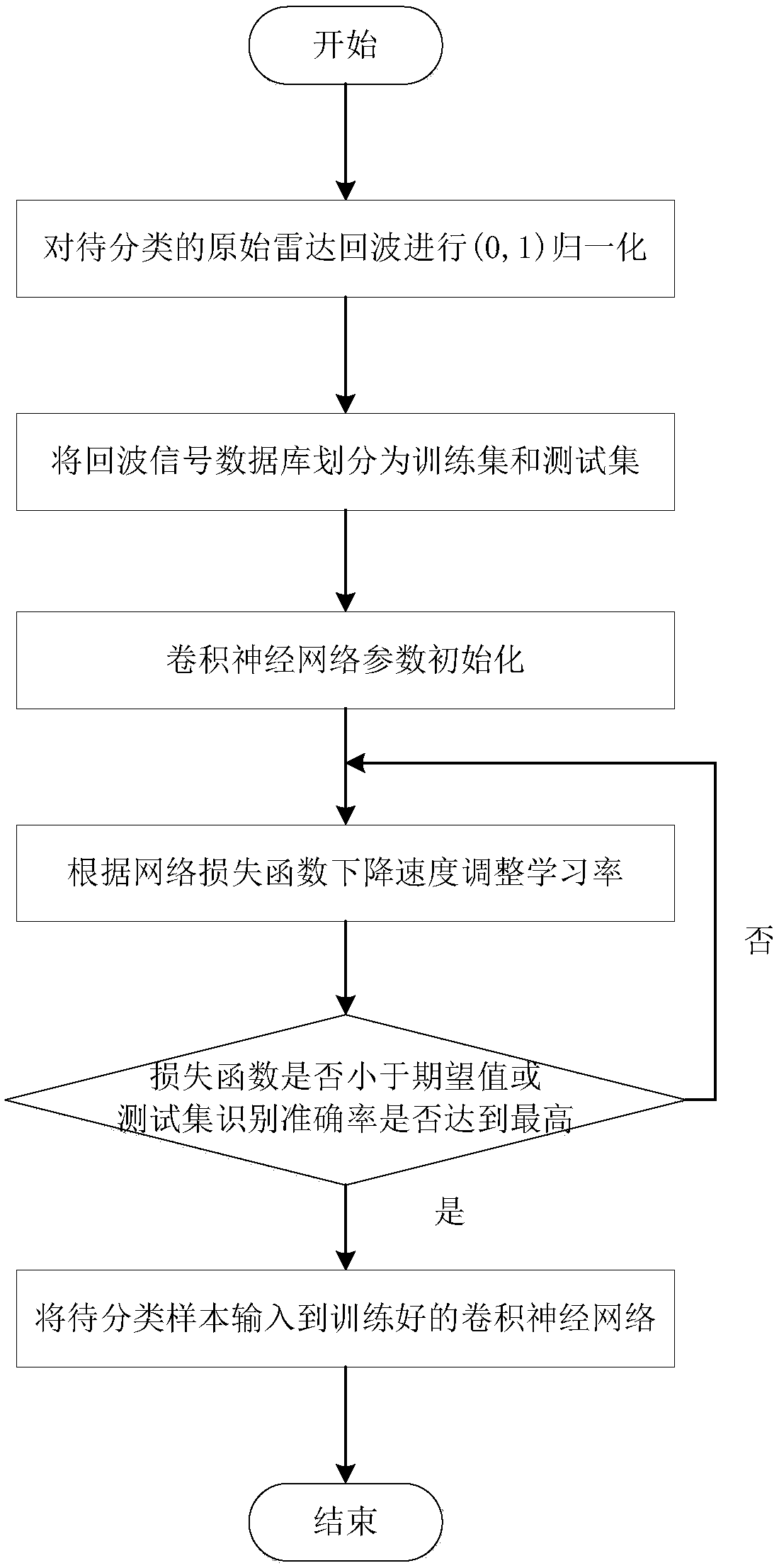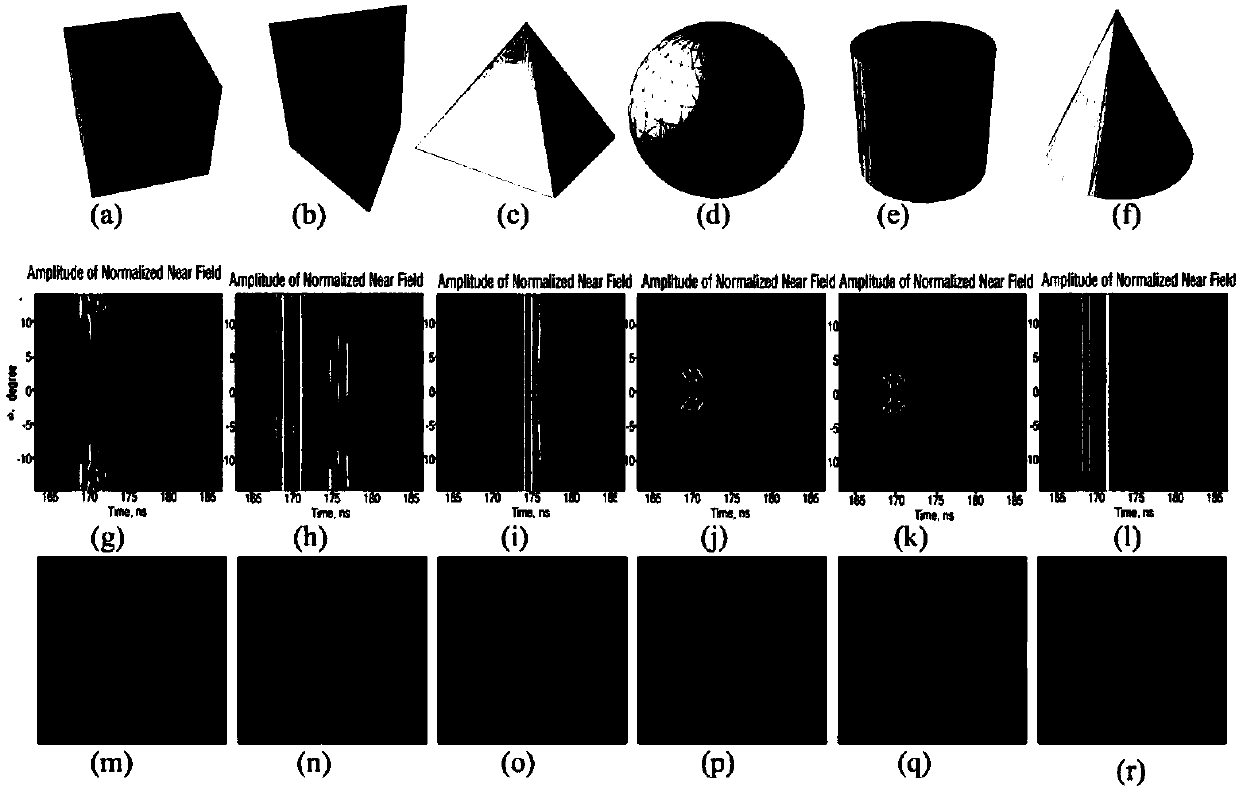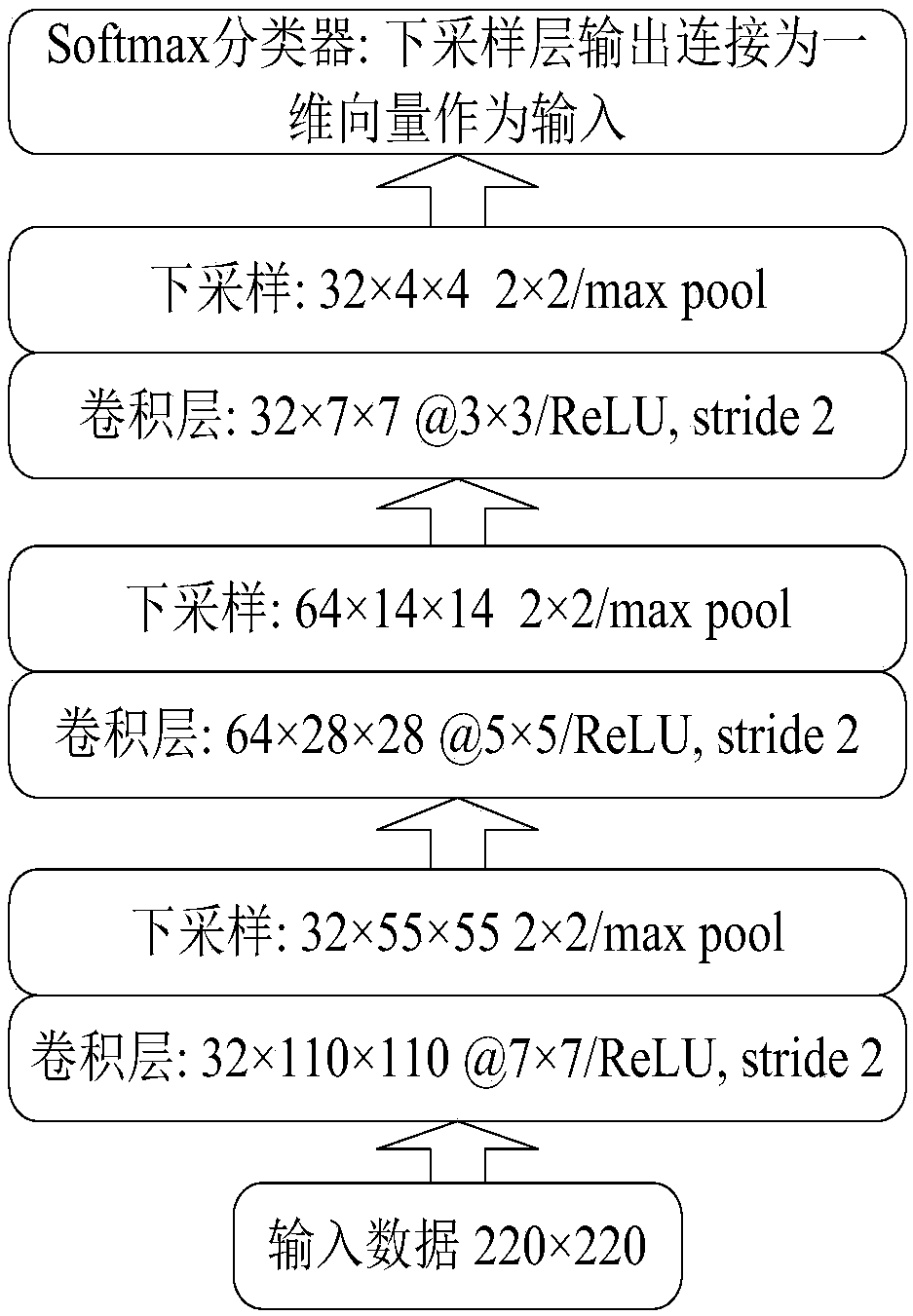Deep learning-based radar echo signal target identification method
A radar echo and target recognition technology, applied in the field of target signal recognition, can solve the problems of imaging preprocessing and low recognition accuracy, and achieve the effect of improving recognition accuracy, high recognition accuracy, and fast training speed
- Summary
- Abstract
- Description
- Claims
- Application Information
AI Technical Summary
Problems solved by technology
Method used
Image
Examples
Embodiment 1
[0049] Considering the recognition of six types of simple targets, the six types of targets used for recognition are cubes, triangular prisms, tetrahedrons, spheres, cylinders and cones, such as figure 2 shown. The echo amplitudes of six types of targets and sample images of SAR images are also figure 2 are given separately.
[0050] Using the radar echo signal classification method based on deep learning in the present invention to classify the radar echo signals to be classified of the test set includes the following steps:
[0051] (1) Perform (0,1) normalization operation on the radar echo signal to be classified, and select the 220×220 sub-block in the data center of the original echo signal as the sample to be classified;
[0052] (2) Use balanced sample training, that is, the number of training samples in each category is equal, and each of the six categories takes 400 as training samples. The technique of increasing the amount of data is adopted for the training s...
Embodiment 2
[0069] Considering the identification of six types of missile targets, the six types of missile targets used for identification are as follows Figure 4 Classes (a)-(f) shown. The echo amplitudes of six types of missile targets, SAR images and SAR original imaging data are also included in the Figure 4 (g)-(l), (m)-(r) and (s)-(x), respectively. Use the trained convolutional neural network to test on the test set. The recognition results are shown in Table 3. The classification results in Table 3 show that the target recognition accuracy based on echo data reaches 100%, and the target recognition based on SAR images is accurate. The rate is 98.83%, while the recognition accuracy based on SAR original imaging data is 99.83%. It can be seen from Table 3 that when training based on SAR images and SAR original imaging data, the recognition accuracy of Missile 3 is low, 93% and 99% respectively. In order to better illustrate the performance difference between the echo data set,...
Embodiment 3
[0081]The SAR imaging algorithm realizes the high resolution of SAR through pulse compression in the range direction and matched filtering in the azimuth direction. Therefore, there is a large loss of information during the imaging process. In order to prove that the radar echo signal contains more information than the SAR image, the information entropy of the echo signal and the SAR image is compared. Consider the SAR images and radar echo signals of cubes and missile targets respectively, such as Figure 6 As shown, it can be seen that the echo data contains richer information than the corresponding SAR image, which indicates that the echo data has greater information entropy. It is calculated that the information entropy of cube target echo data and SAR image is 4.24 and 0.22 respectively; the information entropy of missile model echo data and SAR image is 5.61 and 0.32 respectively. This result is in line with the intuitive feeling, which proves that the echo data used i...
PUM
 Login to View More
Login to View More Abstract
Description
Claims
Application Information
 Login to View More
Login to View More - R&D
- Intellectual Property
- Life Sciences
- Materials
- Tech Scout
- Unparalleled Data Quality
- Higher Quality Content
- 60% Fewer Hallucinations
Browse by: Latest US Patents, China's latest patents, Technical Efficacy Thesaurus, Application Domain, Technology Topic, Popular Technical Reports.
© 2025 PatSnap. All rights reserved.Legal|Privacy policy|Modern Slavery Act Transparency Statement|Sitemap|About US| Contact US: help@patsnap.com



